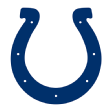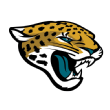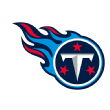How much will your favorite team have to spend when free agency opens Wednesday? NFL Nation answers the question below.
Scan through all 32 teams by division, or click here to jump ahead to your team:
AFC EAST

Buffalo Bills
Overall cap space: $75,941,614
Offense: $41,720,565
Defense: $71,981,100
Special teams: $5,166,000
Analysis: GM Brandon Beane told ownership upon being hired in 2017 that it would take at least two seasons to clear up the Bills' then-tight salary-cap situation. Now almost all of the big contracts from Buffalo's previous regime are gone, except for those given to running back LeSean McCoy ($9.1 million cap number in 2019) and defensive end Jerry Hughes ($10.4 million). Both of those deals expire after this season. The mission for Beane this offseason will be to improve the Bills' 30th-ranked offense while spending in a more responsible and successful way than his predecessors. -- Mike Rodak

Miami Dolphins
Overall cap space: $23,705,987
Offense: $77,559,270
Defense: $77,075,687
Special teams: $1,974,134
Analysis: Miami's salary cap is in a mess after handing out bloated salaries over the past few years. For example, Ndamukong Suh's dead money is the third-biggest hit at more than $13 million. In an attempt to fix this issue, the Dolphins are expected to shed significant money with three of the five players (Ryan Tannehill, $26.6M; Robert Quinn, $12.9M; DeVante Parker, $9.4M) with the biggest cap hits in major danger of being released and the sixth, Andre Branch ($7M), already cut. The Dolphins want to sign Xavien Howard and possibly Ja'Wuan James to long-term extensions, but otherwise expect a lot more cutting than spending from Miami this offseason. -- Cameron Wolfe

New England Patriots
Overall cap space: $26,184,805
Offense: $91,047,089
Defense: $80,629,505
Special teams: $955,000
Analysis: There is plenty of space to operate, and that doesn't factor in quarterback Tom Brady's $27 million cap charge, which could be reduced with an extension. Also, veteran defensive end Adrian Clayborn's future with the team bears watching, as his release could create an additional $3.9 million in cap space. Meanwhile, with kicker Stephen Gostkowski and punter Ryan Allen set for unrestricted free agency, the Patriots' cap charges devoted to specialists will increase notably if those players sign extensions. The bottom line: Although they don't have the most space in the NFL, the Patriots are in a healthy spot cap-wise, and they have the financial freedom to make the moves they deem necessary to maintain their status as Super Bowl contenders. -- Mike Reiss

New York Jets
Overall cap space: $101,473,117
Offense: $40,660,854
Defense: $55,896,325
Special teams: $1,383,949
Analysis: This sounds like a lot of cap space -- and it is -- but it will go quickly because the Jets have a league-high 26 free agents. They have an incredible amount of flexibility, especially when you consider that they don't have much fully guaranteed money on the books beyond 2019 -- only $11.3 million, the combined salaries of Sam Darnold and Jamal Adams. Prepare for a major roster overhaul. GM Mike Maccagnan said they will be "very active" in free agency; look for them to show interest in high-end free agents such as Le'Veon Bell, Dante Fowler Jr. and Trey Flowers. They'd also like to re-sign some of their own, including defensive tackle Henry Anderson and Pro Bowl kicker Jason Myers. -- Rich Cimini
AFC NORTH

Baltimore Ravens
Overall cap space: $25,783,054
Offense: $70,435,054
Defense: $76,881,629
Special teams: $10,906,921
Analysis: The Ravens have more cap space than in recent years, and Baltimore will gain an additional $10.5 million when the Joe Flacco trade becomes official when the new league year begins on Wednesday. The key for new general manager Eric DeCosta is to use those funds to build a strong supporting cast around QB Lamar Jackson. The Ravens are the only team that ranks in the bottom 10 in cap space devoted to wide receivers, running backs and tight ends. The other priority is keeping middle linebacker C.J. Mosley and adding a safety to replace Eric Weddle, who is a playmaker as well as a leader (perhaps Tyrann Mathieu). It's important to get impact players in free agency because Baltimore selects once in the first 84 picks in this year's draft. -- Jamison Hensley

Cincinnati Bengals
Overall cap space: $50,776,466
Offense: $71,539,059
Defense: $68,393,731
Special teams: $5,685,000
Analysis: The Bengals are pretty consistent from year to year with their cap space, usually rolling over several million dollars that they use only for extending their own players. That often means they see themselves as having less cap space than they actually do. What does that mean for their free-agency outlook? The Bengals might go after some middle-tier free agents like they have in the past, but it's unlikely they'd make a big splash that would seismically shift their cap situation. Priority re-signings this season are Tyler Eifert and Darqueze Dennard. -- Katherine Terrell

Cleveland Browns
Overall cap space: $71,159,472
Offense: $76,751,337
Defense: $84,068,482
Special teams: $4,075,000
Analysis: The Browns have plenty of room for additions again -- only the Jets and Colts start free agency with more cap room -- but must keep the future in mind when they make moves. Baker Mayfield's rookie contract helps keep the offense's cost down, but Mayfield, Denzel Ward, Myles Garrett and Nick Chubb all will see significant increases in the future. Jarvis Landry ($14.05 million) and Kevin Zeitler ($12.4 million) have the highest cap hits on the team. Jamie Collins' cap cost was $11.75 million before he was released on Wednesday. Damarious Randall has a $9.069 million cap cost; he is a prime candidate for a contract extension prior to the season. -- Pat McManamon

Pittsburgh Steelers
Overall cap space: $21,251,062
Offense: $98,244,376
Defense: $86,060,773
Special teams: $5,490,000
Analysis: The Steelers have slightly more room to maneuver than in past years and can create more with a series of moves. Quarterback and offensive line contracts comprise more than one-third of the team's cap, but a new deal for Ben Roethlisberger can lessen that hit by reworking his $23.2 million figure. The Steelers created almost $5 million in space by trading right tackle Marcus Gilbert ($4.915 million) to the Cardinals on Friday and should have enough to sign a few players in free agency. -- Jeremy Fowler
AFC SOUTH

Houston Texans
Overall cap space: $74,190,219
Offense: $58,558,642
Defense: $76,396,774
Special teams: $1,550,666
Analysis: More than 55 percent of the Texans' payroll is allocated to defense after the team put the franchise tag on defensive end/outside linebacker Jadeveon Clowney, and that number could get higher if the team signs him to a long-term deal by the July 15 deadline. The Texans also will try to keep safety Tyrann Mathieu and cornerback Kareem Jackson but might have a tough time paying both veterans in the secondary if they choose to prioritize other needs. -- Sarah Barshop

Indianapolis Colts
Overall cap space: $106,676,837
Offense: $96,571,095
Defense: $33,719,293
Special teams: $4,524,000
Analysis: To no surprise, the majority of the Colts' money is on the offensive side of the ball. The offense more than doubles the defense. But it's not the quarterbacks, with Andrew Luck's $27.5 million cap value in 2019, that leads the way. The bulk of the money is on the offensive line, where the group that gave up an NFL-low 18 sacks last season is responsible for $30.1 million. The defense could get closer to the offense when it comes to money if the Colts use some of their NFL-high salary-cap space to find a pass-rusher and get help in the secondary during free agency. -- Mike Wells
Field Yates assesses the chances of the Cardinals taking Kyler Murray with the No. 1 pick or trading the selection to a team that needs a QB.

Jacksonville Jaguars
Overall cap space: 26,588,962
Offense: $71,331,525
Defense: $101,025,319
Special teams: $3,591,031
Analysis: The Jaguars cleared $30 million in cap space by releasing DT Malik Jackson, RB Carlos Hyde, RT Jermey Parnell, FS Tashaun Gipson and long-snapper Carson Tinker. They will have even more space when they release QB Blake Bortles within the next few weeks. The moves certainly will allow the team to sign QB Nick Foles and add another mid- to lower-tier free agent or two (OL, WR, TE could be addressed). The Jaguars have devoted most of their resources to defense and are counting on that side of the ball to carry them again in 2019. -- Michael DiRocco

Tennessee Titans
Overall cap space: $44,356,051
Offense: $93,016,610
Defense: $77,029,335
Special teams: $8,713,666
Analysis: The Titans have $16 million more in cap space invested in their offense than their No. 3 scoring defense (18.9 points per game). The secondary occupies more than half ($39.1 million) of the $77 million allocated to the defense. Titans GM Jon Robinson said safety Kenny Vaccaro will be a primary target in free agency. Tennessee needs to add a veteran wide receiver and a pass-rusher. With plenty of cap space, it will have the necessary resources to upgrade the roster. -- Turron Davenport
AFC WEST

Denver Broncos
Overall cap space: $34,550,787
Offense: $62,209,384
Defense: $87,668,746
Special teams: $4,570,000
Analysis: The Broncos won't have $34.5 million worth of cap space for long. When the deal for quarterback Joe Flacco becomes official, his $18.5 million base salary will go on the books. The trade of Case Keenum to Washington also adds a $7 million dead money' charge to the Broncos' cap, which is less than it would have been before the trade ($10 million). Safety Darian Stewart's release will add slightly more than his $2.8 million dead money' charge as overall the Broncos will lose almost half of that initial available space. Linebacker Brandon Marshall ($8.84 million cap charge) will also likely be a free agent so they'll get about $4.5 million cap savings there. But they'll have to make some contract adjustments with additional players or make additional moves to create more room. The Broncos believe they can do it and Von Miller's team-high $25.125 million cap charge is one place where they could start by writing a check to turn salary into signing bonus. -- Jeff Legwold

Kansas City Chiefs
Overall cap space: $10,082,532
Offense: $88,222,861
Defense: $89,844,652
Special teams: $4,080,000
Analysis: The Chiefs would save $14 million against the cap by trading or releasing Justin Houston. Such a move would give the Chiefs more than $24 million of cap room. Another player to watch is Dee Ford, who as the franchise player is costing the Chiefs $15.4 million against the cap. If he's traded, his number comes off the Chiefs' books, and the two moves combined would provide the Chiefs with more than $39 million in cap space. That's enough to make a splash in free agency and perhaps even extend one of their younger players, such as Tyreek Hill or Chris Jones. -- Adam Teicher

Los Angeles Chargers
Overall cap space: $22,422,603
Offense: $100,747,234
Defense: $61,107,824
Special teams: $2,170,000
Analysis: Thirty players on offense consume 61.4 percent of the Chargers' cap space, so it could make some sense to zero in on an impact player on defense to balance things out in free agency. Chargers GM Tom Telesco also said he would consider doing extensions this offseason for a few of his front-line players, including running back Melvin Gordon and quarterback Philip Rivers, who have a year left on their deals. -- Eric D. Williams

Oakland Raiders
Overall cap space: $72,878,781
Offense: $89,817,034
Defense: $26,697,814
Special teams: $2,752,722
Analysis: More than 75 percent of the Raiders' salary cap is spoken for by the offense, with a $22.5 million cap hit for QB Derek Carr. Yeah, Carr needs some weapons, and with 10 draft picks and nearly $73 million in cap space, coach Jon Gruden and GM Mike Mayock can make some hay. Acquiring receiver Antonio Brown in a trade makes sense, even if his cap number of $22.165 million does not. The Raiders would like to re-sign tight end Jared Cook, who had a relatively low cap number of $5.675 million last year, and Marshawn Lynch could still be in play, though Doug Martin might be a cheaper alternative. The defense needs help, obviously, and most of that should come via the draft, which would keep the discrepancy in cap space spent on offense and defense intact, so to speak. -- Paul Gutierrez
NFC EAST

Dallas Cowboys
Overall cap space: $27,556,996
Offense: $95,501,261
Defense: $74,240,260
Special teams: $2,870,000
Analysis: Cap space is not a problem, even with the $20.5 million franchise tag on DE DeMarcus Lawrence. If the Cowboys want more room, they can restructure some contracts, such as that of G Zack Martin. The Cowboys want to keep their key players first, including Lawrence, QB Dak Prescott, WR Amari Cooper, RB Ezekiel Elliott and CB Byron Jones. Wide receiver Cole Beasley is Dallas' second-most important unrestricted free agent to keep after Lawrence. He turns 30 in April but is a security blanket for Prescott. The Cowboys want to be able to stagger some of the contracts in structure, length or signing to keep away from cap issues down the road. -- Todd Archer

New York Giants
Overall cap space: $16,776,026
Offense: $112,031,152
Defense: $46,986,854
Special teams: $1,300,000
Analysis: The Giants have some money to spend after general manager Dave Gettleman let Landon Collins walk primarily because he didn't want to invest heavily in a box safety. They also created space when they agreed to trade DE/LB Olivier Vernon to the Browns for G Kevin Zeitler on Friday. Now, the Giants have to put significant money into that defense, which accounts for only 25 percent of this year's salary cap and is the unit that needs the most upgrading. -- Jordan Raanan

Philadelphia Eagles
Overall cap space: $3,760,441
Offense: $111,730,445
Defense: $82,751,291
Special teams: $1,942,500
Analysis: The Eagles can free up room by declining to pick up DT Tim Jernigan's $11 million salary for next season and finding a solution for WR Nelson Agholor's $9.4 million cap hit, but DE Brandon Graham's new three-year deal will eat into some of that once it hits the books. The Eagles believe in building from the inside out, and that's evident in their resource allocation. They currently have $44 million committed to the defensive front and $57 million to the offensive line for a total of $101 million. -- Tim McManus

Washington Redskins
Overall cap space: $14,063,473
Offense: $105,586,593
Defense: $ 74,476,245
Special teams: $ $6,777,857
Analysis: With Case Keenum now on board, the Redskins will have $27.275 million invested on their cap at quarterback -- - with the injured Alex Smith accounting for $20.4 million cap hit and a long shot to play -- when the new league year begins. Last season, each of the top seven highest cap hits on offense missed at least three games due to injuries. They'd like to keep receiver Jamison Crowder, but that might be difficult. On defense, corner Josh Norman has the highest cap hit at $14.5 million, but they plan is to keep him around. The Redskins have 40.6 percent of their cap space devoted to defense -- with 38 percent of that total occupied by Norman and Ryan Kerrigan. -- John Keim
NFC NORTH

Chicago Bears
Overall cap space: $13,637,712
Offense: $80,792,486
Defense: $95,601,305
Special teams: $4,557,500
Analysis: The Bears freed up $2.215 million in cap space by releasing linebacker Sam Acho and restructuring guard Kyle Long, who was set to incur an $8.5 million cap hit. The Bears need offensive linemen, defensive backs and a kicker in free agency after cutting Cody Parkey, which leaves $4.4 million in dead money. Between Khalil Mack ($22.3 million), Akiem Hicks ($10.1) and Kyle Fuller ($13.5), the Bears' defense has a handful of heavy cap hits, and the amount of room they currently have could force the front office into some tough negotiations if they want to keep cornerback Bryce Callahan and safety Adrian Amos. -- Courtney Cronin

Detroit Lions
Overall cap space: $40,019,009
Offense: $80,892,783
Defense: $67,153,678
Special teams: $7,630,000
Analysis: Matthew Stafford's massive cap hit ($29.5 million) skews this number, but it's a manageable place for Detroit as it tries to fill multiple needs during free agency (pass-rusher, wide receiver, tight end, cornerback, running back). Detroit created more cap space after releasing G T.J. Lang ($11,510,418) on Friday and could get more if they make a move with Marvin Jones ($9,195,882). A bulk of the cap money in free agency should go to the defense for the second consecutive year. Other than Rick Wagner ($11.9 million) and Stafford, there are no egregiously large contracts on the ledger relative to production. -- Michael Rothstein

Green Bay Packers
Overall cap space: $34,594,929
Offense: $101,308,739
Defense: $59,090,313
Special teams: $6,063,723
Analysis: Even though he signed the richest contract in the NFL last summer, Aaron Rodgers' cap charge ($26.5 million) is lower than that of six quarterbacks for 2019. That means the Packers have plenty of flexibility on their cap for this offseason. That could change next year, however, because Rodgers' cap figure jumps to $32.6 million, which currently ranks as the highest cap charge among all quarterbacks for 2020. The Packers don't have any must-re-sign free agents, and the ones they might want to bring back (perhaps Clay Matthews) won't be enormous contracts. They also could pick up additional space if they cut oft-injured outside linebacker Nick Perry. Releasing him before his March roster bonus of $4.8 million is due would give the Packers an additional $3.337 million in cap space. That savings would jump to $10.737 million if they designate him as a post-June 1 cut. The Packers' offensive cap figure is 17.67 percent higher than the NFL average, and their defensive number is 19.33 percent lower. -- Rob Demovsky

Minnesota Vikings
Overall cap space: $5,263,899
Offense: $90,512,429
Defense: $95,608,896
Special teams: $960,000
Analysis: The Vikings need to be active in free agency to upgrade the offensive line and a handful of other positions, but their cap situation is tight ahead of the new league year. Kirk Cousins accounts for 15.5 percent of the total cap, and his $29 million hit will force Minnesota to make some tough decisions. Anthony Barr was the first domino to fall in free agency after the Vikings chose not to franchise tag him (which would have cost $15.8 million), and they'll soon have to make more tough decisions on Sheldon Richardson (pending FA), Latavius Murray (pending FA), Everson Griffen, Kyle Rudolph and Mike Remmers -- the latter three of which are candidates for a restructure or release. There are a number of ways the Vikings could free up cap space to create room to pay free agents, which they'll need to do if they want to retain their players and/or go after targets on the open market. -- Courtney Cronin
NFC SOUTH

Atlanta Falcons
Overall cap space: $7,646,188
Offense: $102,850,648
Defense: $70,596,081
Special teams: $4,120,000
Analysis: The offense accounts for 57.92 percent of the Falcons' cap, which is not surprising, considering quarterback Matt Ryan's cap value for 2019 is $22.8 million, or 22.17 percent of the offensive cap. The offensive line accounts for 23.16 percent of the overall cap, which might disappoint fans who have expected more out of the line. Defensively, tackle Grady Jarrett will count $15.209 million against the cap under the franchise tag. Working out a long-term extension would significantly decrease Jarrett's cap number. Wide receiver Julio Jones' cap number of $13.47 million for '19 could decrease as well once his contract is adjusted, as promised by the organization. Some folks might be discouraged by cornerback Desmond Trufant carrying a $13.9 million cap figure into the league year, but Trufant won't be taking a pay cut, as the Falcons continue to believe in his ability. -- Vaughn McClure

Carolina Panthers
Overall cap space: $16,870,067
Offense: $80,554,235
Defense: $89,706,787
Special teams: $6,257,500
Analysis: Quarterback Cam Newton ($23.2 million) and linebacker Luke Kuechly ($17.2 million) are the biggest cap hits. The biggest need is defensive end, which represents only 6.37 percent of the cap. Spending here will increase. Carolina needs to add an edge rusher high in the draft and likely free agency. Coach Ron Rivera says left tackle Matt Kalil will be on the team in 2019, but he deferred to GM Marty Hurney on Kalil's status. Cutting Kalil, who missed last season with a knee injury, would clear $7.25 million in cap space, but it would also create $14.7 million in dead money. -- David Newton

New Orleans Saints
Overall cap space: $10,325,058
Offense: $106,657,287
Defense: $58,046,127
Special teams: $4,895,000
Analysis: Normally, the Saints don't let this kind of limited cap space slow them down. They typically restructure deals to push cap costs into the future and add three or four key newcomers. They could do the same this year by reworking Drew Brees' deal (he has the highest cap number in the NFL, at $33.5 million). Their top priorities should be adding a pass-catcher at TE or WR and either re-signing or replacing DE Alex Okafor. They also need to decide whether to re-sign QB Teddy Bridgewater and RB Mark Ingram. But New Orleans might slow its usual pace a bit to prepare for some monster contracts in the near future. Brees, WR Michael Thomas, G Andrus Peat and C Max Unger are scheduled to become free agents in 2020, followed by DE Cameron Jordan, RB Alvin Kamara and others in 2021. -- Mike Triplett

Tampa Bay Buccaneers
Overall cap space: $3,686,491
Offense: $114,075,782
Defense: $75,546,094
Special teams: $4,485,000
Analysis: By extending Donovan Smith rather than using the franchise tag on him, Smith's salary-cap hit drops from $14.067 million to $12.5 million for 2019, so instead of having roughly $2 million to spend on free agents and draft picks, the Bucs have $3.69 million to spend, which will make it extremely difficult to re-sign linebacker Kwon Alexander and slot receiver Adam Humphries and sign a backup quarterback and kicker. Where did all the Bucs' money go after they were in the top five in cap space heading into 2018? Aside from Smith, Jameis Winston's fifth-year option for 2019 carries a $20.9 million cap hit, and Mike Evans' extension signed last offseason carries a $20 million cap hit, Ali Marpet's is $11.02 million, and Cameron Brate's is $7 million. Plus, the Bucs traded for Jason Pierre-Paul last offseason, who carries a $14.9 million cap hit, and they signed Ryan Jensen, who carries a $10 million cap hit. The Bucs will have to clear out some cap space and can do that by cutting or trading Gerald McCoy ($13 million cap hit) and/or DeSean Jackson ($10 million). -- Jenna Laine
NFC WEST

Arizona Cardinals
Overall cap space: $36,469,498
Offense: $76,079,966
Defense: $71,083,257
Special teams: $3,693,750
Analysis: The Cardinals enter free agency with the most cap space of the Steve Keim era, which began in 2013. While Arizona is in a good position to use free agency to fill significant needs, it still has $90.52 million of its salary cap tied up in nine players, including $19.5 million in pass-rusher Chandler Jones. Arizona has invested 50.6 percent of its salary cap in its defense, which finished last season 20th overall and 32nd against the run. The other 49.4 percent of the Cards' cap is invested in offense and special teams, which the Cardinals need to address under first-year coach Kliff Kingsbury. -- Josh Weinfuss

Los Angeles Rams
Overall cap space: $36,111,025
Offense: $79,827,115
Defense: $64,070,827
Special teams: $7,812,000
Analysis: The Rams were set to enter free agency with $22 million in cap space, but declined the option on C John Sullivan's two-year contract and also released veteran ILB Mark Barron to free up more than $13.5 million. Four key free agents will test the market, including LG Rodger Saffold, DT Ndamukong Suh, OLB Dante Fowler and S Lamarcus Joyner. Fowler is a priority to sign, and with the newfound cap space the Rams have the flexibility to pursue other top playmakers to round out their roster. -- Lindsey Thiry

San Francisco 49ers
Overall cap space: $69,481,542
Offense: $89,516,850
Defense: $68,719,136
Special teams: $5,616,000
Analysis: The 49ers have invested heavily in offense, especially last year, when they signed QB Jimmy Garoppolo, RB Jerick McKinnon and C Weston Richburg to big contracts and used their first two picks on OT Mike McGlinchey and WR Dante Pettis. Although receiver is still a need, it seems that the Niners could be in for a bit of a correction this offseason, as there are multiple holes on defense, and they have the cap space and draft capital to get many of them filled. -- Nick Wagoner

Seattle Seahawks
Overall cap space: $33,026,731
Offense: $87,837,820
Defense: $66,006,792
Special teams: $1,137,538
Analysis: Russell Wilson's 2019 cap charge of $25.29 million is the eighth highest of any player in the NFL as of now. The Seahawks could lower that number considerably by signing Wilson to an extension. However, that wouldn't happen until well after free agency -- if it happens at all -- which means the Seahawks need to budget with that figure in mind. Kam Chancellor, who suffered a career-ending neck injury in 2017, still has the fifth-highest cap charge on the team, at $12.5 million. Ahead of him are Wilson, Frank Clark ($17.13 million), Bobby Wagner ($14.04 million) and Doug Baldwin ($13.14 million). Chancellor's number will remain north of $10 million assuming Seattle releases him before June 1. The Chancellor situation exemplifies the financial risk in giving lucrative third contracts to veterans with injury histories, which is a big reason the Seahawks haven't wanted to extend Earl Thomas and probably won't break the bank to re-sign K.J. Wright. -- Brady Henderson
